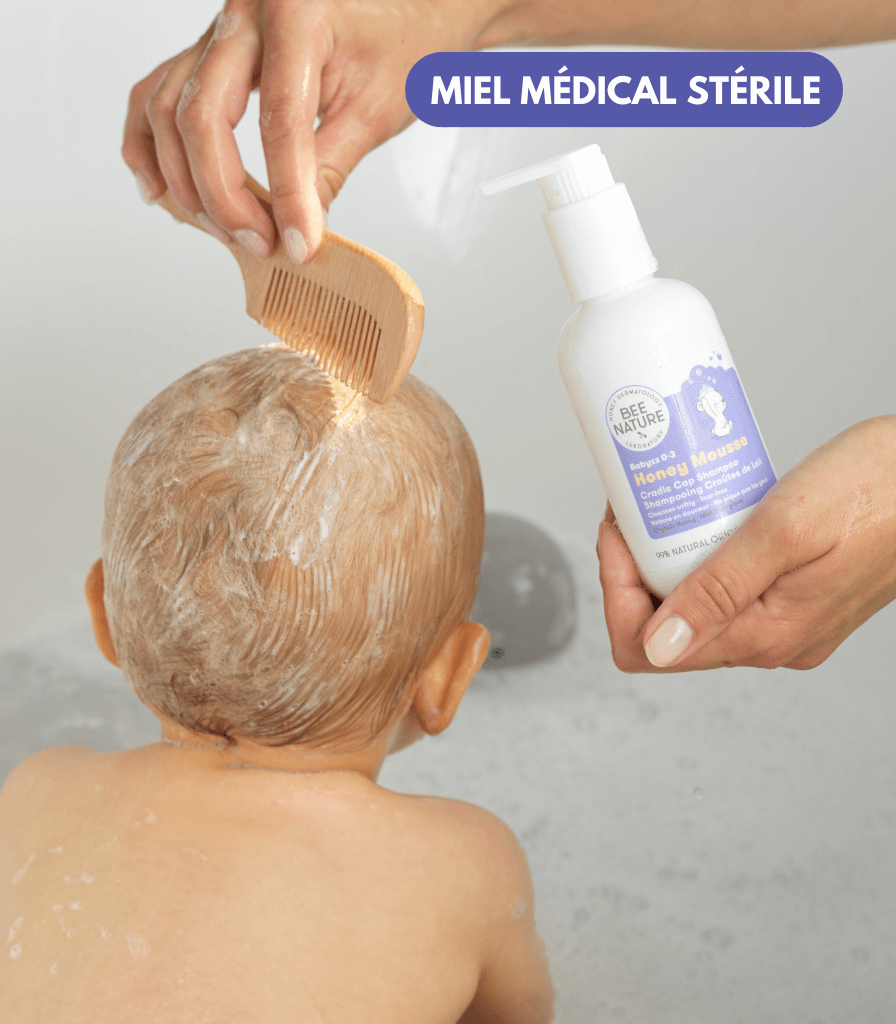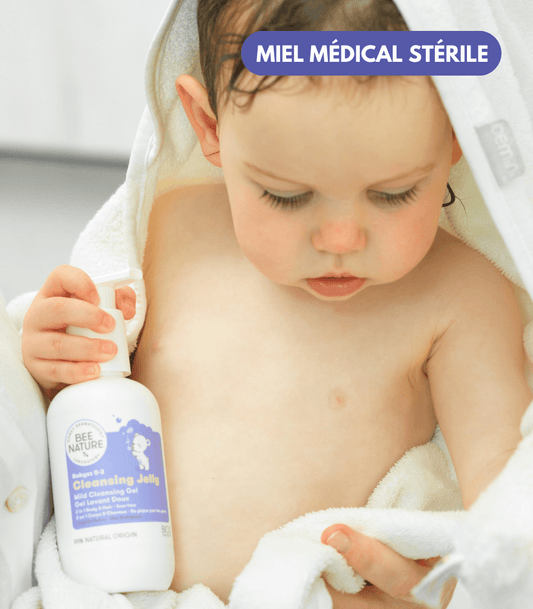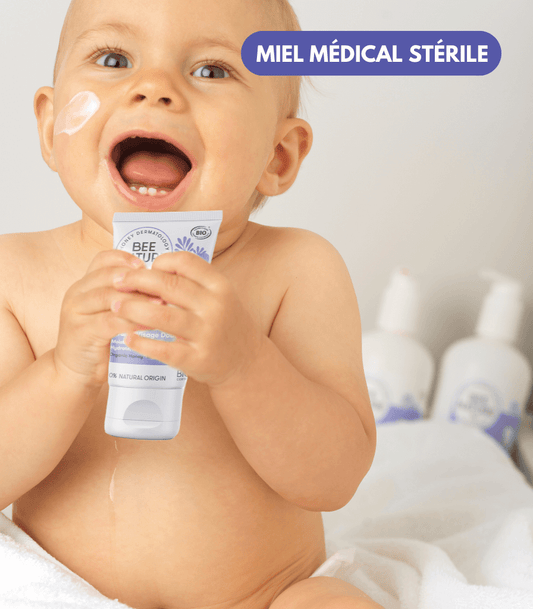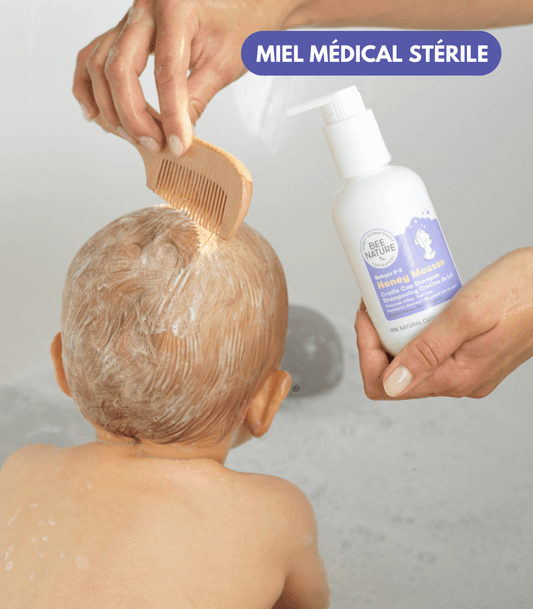It is often described as smooth, soft and perfect, yet babies’ skin requires special attention due to its many characteristics. Indeed, if its structure is similar to that of adults, the skin of babies is an organ in the course of formation which is thus immature, more sensitive and fragile. Cradle cap, diaper rash or simple irritation due to diapers, babies can face many unpleasant events.
Baby’s first days
Did you know that a newborn’s skin is covered with a grayish greasy coating called vernix caseosa? This coating is composed of a very sticky sebum and keratinous debris. It has a role of protection during its aquatic life in the belly of Mom! Its thickness varies from one baby to another and it disappears naturally in the following days because it is no longer useful. The vernix caseosa has a hydrating and antioxidant function, it allows the maintenance of the acid mantle of the epidermis and thus helps to fight against the external aggressions and the infections.
Its respect favors the establishment of the hydrolipidic film of the skin and its flora. However, it is too often eliminated at birth with detergent cosmetic products in order to make the baby clean for its mother. More and more dermatologists and midwives are advising to only rinse with water and to avoid baths until the vernix caseosa has disappeared. Think of talking about it to your maternity hospital!
The characteristics of the infant’s skin
The sweat and sebaceous glands, responsible for sweat and sebum forming the hydrolipidic film, are still immature. As a result, babies have difficulty regulating their body temperature and are more sensitive to heat and cold. Their skin is also more fragile and sensitive to external aggressions. It will dry out more easily when in contact with irritating substances and will be more likely to react to sensitizing substances, causing allergies in the child later on.
The skin flora, a natural barrier that fights against infections, is gradually built up. The child would need three years to build up its protective mechanism and ten years to acquire its full skin defenses. The pH of a baby’s skin is also different from that of an adult: it is neutral (= 7) at birth, and will become slightly more acidic as he or she grows (reaching a value of about 5.5). Respecting this physiological pH avoids any irritation or sensitization of baby’s skin.
It is therefore important to choose gentle, hypoallergenic products with a neutral pH, in order to respect their still fragile skin balance. Our Babee Nature products are obviously developed with this in mind, in order to meet all these requirements!
Let’s also note that during the first year, babies’ skin contains very few melanocytes, which are also non-functional. These cells responsible for pigmentation normally protect the skin from ultraviolet rays. It is therefore essential to protect babies from the sun because exposure to the sun and sunburn can considerably increase the risk of skin cancer in adulthood. Therefore, avoid any direct exposure until the age of three and prefer short exposures before 11am and after 4pm. Finally, don’t forget to apply a high level of sun protection and bring a hat, T-shirt and sunglasses for a safe walk!
Source : L’Observatoire des Cosmétiques. Les Cosmétiques pour Bébés recommanded by CosmeticOBS – Guide 2018. Les Editions de l’Observatoire des Cosmétiques.






